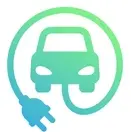EV sales continue to rise, but the last year of headlines falsely stating otherwise would leave you thinking they haven’t. After about full year of these lies, it would be nice for journalists to stop pushing this false narrative that they could find the truth behind by simply looking up a single number for once.
Here’s what’s actually happening: Over the course of the last year or so, sales of battery electric vehicles, while continuing to grow, have posted lower year-over-year percentage growth rates than they had in previous years.
This alone is not particularly remarkable – it is inevitable that any growing product or category will show slower percentage growth rates as sales rise, particularly one that has been growing at such a fast rate for so long.
In some recent years, we’ve even seen year-over-year doublings in EV market share (though one of those was 2020->2021, which was anomalous). To expect improvement at that level perpetually would be close to impossible – after 3 years of doubling market share from 2023’s 18% number, EVs would account for more than 100% of the global automotive market, which cannot happen.
Instead of the perpetual 50% CAGR that had been optimistically expected, we are seeing growth rates this year of ~10% in advanced economies, and higher in economies with lower EV penetration (+40% in “rest of world” beyond US/EU/China). Notably, this ~10% growth rate is higher than the above Norway example, which nobody would consider a “slump” at 94% market share.
It’s also clear that EV sales growth rates are being held back in the short term by Tesla, which has heretofore been the global leader in EV sales. Tesla actually has seen a year-over-year reduction in sales in recent quarters – likely at least partially due to chaotic leadership at the wayward EV leader – as buyers have been drawn to other brands, while most of which have seen significant increases in EV sales.



Tesla is still a rare niche. If they were more common (and had more in common with other cars) the third parties would start marking parts for things like shocks and brakes that wear out. You have to take BMWs to dealers most of the time as well as it is hard to find replacement parts elsewhere.
The big auto makers have enough volume that anything they do will get third parties making parts for service. The part may not start out as a commodity but it will become one if it needs replacement often. Thought many parts are not made in house and the company that makes them often sells at a slight loss to the OEM because replacement parts will be so profitable (an accounting loss - they invest so much in jigs and automation that sales just to the OEM won’t pay for them, if you ignore those setup costs they still make money)